Dark Star – HR Gigers's World
SYNOPSIS
Where others flee, he makes his home. What others dread, he makes his habitat. What others fight to suppress, he drags back to the surface. Throughout his life, HR Giger inhabited the world of the uncanny: a dark universe on the brink of many an abyss.
He did not create this world because he held it dear, but rather because he had no other option. It was the only way this amiable, modest and humorous man was able to keep his fears in check. Giger was merely the bearer of dark messages, charting our nightmares, drafting maps of our subconscious and moulding our primal fears.
HR Giger lived in the heart of Zurich in a virtually self-contained, parallel world. It is a separate universe with a dark star, the “Dark Star” HR Giger at the centre, and everything else revolving around him. In this space, plucked out of time and behind closed shutters, day blurs into night. Only his family, closest friends and a few assistants are privy to his realm, and they have their work cut out for them. The growing number of exhibitions in important European art galleries are testament to the return of Giger’s art to the established art world.
The extent to which Giger stands between the genres manifests itself within the art world. Due to his depth-psychological, unsettling motifs he’s automatically placed in the categories of Surrealism and Fantastic Realism, yet his proximity to pop culture is undeniable – he always made use of its tools such as film, comics, advertising and design – and undermined it with his pessimism.
He turned advertising-consumer-department store aesthetics on its head, transforming it into its antithesis. Giger’s messages are apocalyptic and mysterious. They stand in direct contradiction to the megalomaniacal fantasies of our era, and his monsters ultimately force us to take a good look in the mirror.
In the last year of his life, Giger rarely ventured out into the other world. Tired and exhausted, he slowly withdrew from the public sphere and looked back at his life, which was packed with surprises, cruel twists of fate and great achievements, not least of which he was winning an Oscar for “Alien”.
In the film, Giger reminisces about holding a skull in his hands for the first time as a 6-year-old boy, as if it were only yesterday. It was a gift from his father, who was the town chemist in Chur. The boy managed to overcome a fear for the first time, and he demonstrated this by tying a string to the skull and dragging it behind him through the alleys of his hometown: It was a formative experience, and that skull is the foundation of his world. A world in which the insignia, horrors and mysteries of death should remain omnipresent.
At the age of 73, Hansruedi Giger regarded his oldest skull with gratitude, almost affection. It was his impetus, he said. The impetus to embark on a lifelong journey into the depths and nuances of every kind of darkness. A journey that would soon come to an end, he added calmly. He’d lived long enough. It was almost as if he anticipated his rapidly approaching death. Hansruedi Giger died a short time later in May of 2014, at the age of 74.
